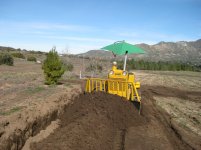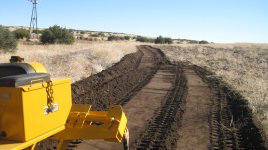Tx Jim
New Member
Based on this statement, why do you think that it does not work with a rear blade and grading?As long as the system is adjusted-setup properly, then why do you think that it doesn't work for grading? There is still a load put on the implement, you just set it up to be much more sensitive than when plowing.
Object of blading is leave area graded ""smooth"". If an obstruction(hard spot) is encountered when 3 pt mechanism is in draft control 3 pt will raise every so slightly even in a sensitive setting whereas in depth control 3 pt hitch will remain at set position. If blade smoothed ground to your satisfaction in "draft position" then it will do a better job of smoothing when in "depth control". I was taught at manufacture sales meetings that draft control was for 3pt plowing only and everything else which includes blading & mowing to use depth control setting. I think draft control has made no miraculous changes since it's inception,refinements yes but it's concept is the same. Don't you think the depth stops on each end of blade is what's giving you the blading results you want instead of draft control???


